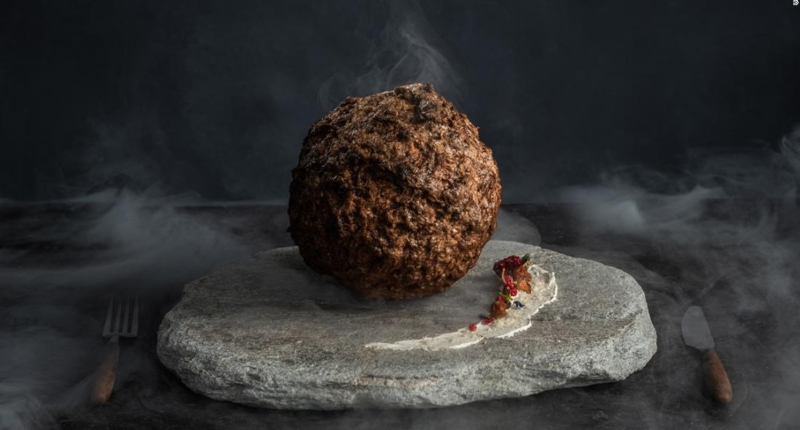Australian food startup Vow has created a lab-made meatball using mammoth DNA as a publicity stunt to raise awareness of the potential of cultured meat to reduce the need for animal agriculture and help fight the climate crisis. However, the meatball is not intended for human consumption due to safety concerns. Vow hopes to soon get regulatory approval in Singapore to sell lab-made quail meat. The FDA has approved lab-grown chicken for human consumption in the United States. Mammoths went extinct about 5,000 years ago, and their remains have been found so well-preserved in permafrost that they still have blood in their veins. Although Love Dalén, a professor of evolutionary genomics, thinks the meatball project has no great scientific value, he would definitely taste one if they ever went on sale.
Australian food startup, Vow, has created a lab-made meatball using mammoth DNA. The woolly mammoth remains are frequently found entombed in the Arctic permafrost, and scientists have sequenced the mammoth genome to learn more about the extinct Ice Age creatures. Vow has used some of this information to develop an approximation of mammoth meat. The meatball will join the collection at the Rijksmuseum Boerhaave, a museum of science and medicine in the Netherlands. The project’s goal is to raise awareness of the potential of cultured meat to make eating habits more planet-friendly.
The meatballs are a publicity stunt and are not intended for human consumption. They are more like lab-made lamb mingled with a tiny amount of mammoth DNA. The scientists working on the project did not have access to a frozen stash of mammoth tissue on which to base their efforts. Instead, they focused on a protein present in mammals called myoglobin, which gives meat its texture, color, and taste. They identified the DNA sequence for the mammoth version of the protein in a publicly available genome database and filled in gaps in the sequence using information from the genome of an African elephant. They then inserted the synthesized gene into a sheep muscle cell, which was grown in a lab, producing around 400 grams of mammoth meat.
Although mammoth meat was a part of our Stone Age ancestors’ diet, the meatballs are not intended for human consumption. They are a creative way to draw attention to the potential of cultured meat and to start a conversation about how we get our food. The mammoth DNA in the meatballs only constitutes one gene out of the 25,000 genes present in sheep. The mammoth myoglobin did change the physical appearance of the sheep muscle cells, but neither Ryall nor Wolvetang, the project’s scientists, had tasted the meatballs. Vow’s chief scientific officer, James Ryall, hopes that the project will inspire more people around the world to consider cultured meat as a planet-friendly alternative.
Vow’s chief scientific officer, James Ryall, explained that they did not taste the mammoth meatball because they are unsure of its safety profile, given that the protein has not existed for 5,000 years, and they do not know the potential allergenicity of this particular protein. For this reason, they will not offer it as a product.
The aim of the project is to raise awareness of the potential of cultured meat to reduce the need to slaughter animals for food and help fight the climate crisis. Animal agriculture is responsible for about a third of global greenhouse gas emissions. Vow hopes to soon get regulatory approval in Singapore to sell lab-made quail meat. In the United States, the FDA has approved lab-grown chicken for human consumption.
Mammoths went extinct about 5,000 years ago, and their remains have been found so well-preserved in permafrost that they still have blood in their veins. Love Dalén, a professor of evolutionary genomics who sequenced the world’s oldest mammoth DNA, knows what mammoth meat tastes like. He said he couldn’t see great scientific value in the meatball project, but he would definitely taste one if they ever went on sale, adding that it “cannot possibly taste worse than real mammoth meat.”
Don’t miss interesting posts on Famousbio










